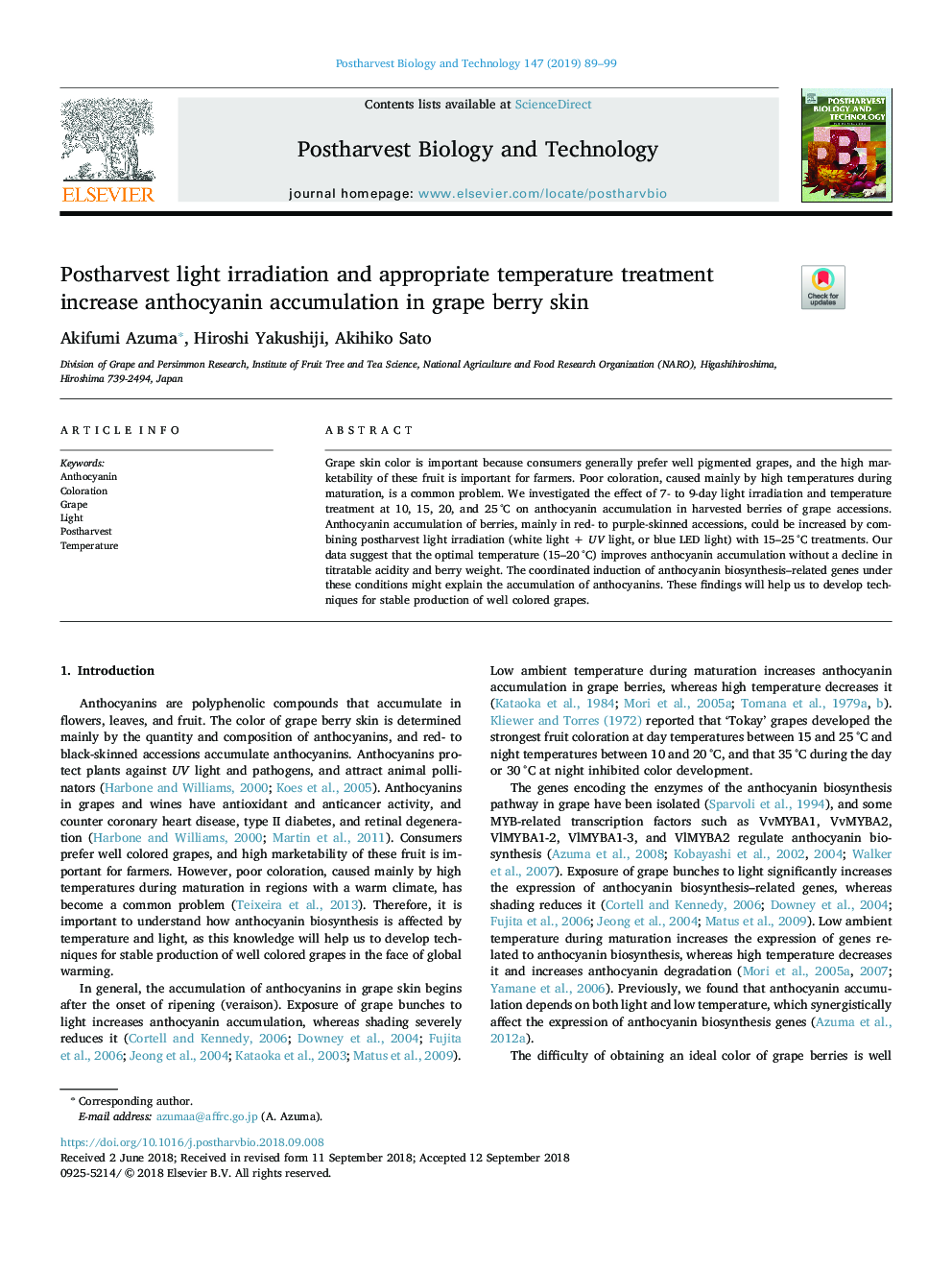| Article ID | Journal | Published Year | Pages | File Type |
|---|---|---|---|---|
| 10223765 | Postharvest Biology and Technology | 2019 | 11 Pages |
Abstract
Grape skin color is important because consumers generally prefer well pigmented grapes, and the high marketability of these fruit is important for farmers. Poor coloration, caused mainly by high temperatures during maturation, is a common problem. We investigated the effect of 7- to 9-day light irradiation and temperature treatment at 10, 15, 20, and 25â°C on anthocyanin accumulation in harvested berries of grape accessions. Anthocyanin accumulation of berries, mainly in red- to purple-skinned accessions, could be increased by combining postharvest light irradiation (white light + UV light, or blue LED light) with 15-25â°C treatments. Our data suggest that the optimal temperature (15-20â°C) improves anthocyanin accumulation without a decline in titratable acidity and berry weight. The coordinated induction of anthocyanin biosynthesis-related genes under these conditions might explain the accumulation of anthocyanins. These findings will help us to develop techniques for stable production of well colored grapes.
Related Topics
Life Sciences
Agricultural and Biological Sciences
Agronomy and Crop Science
Authors
Akifumi Azuma, Hiroshi Yakushiji, Akihiko Sato,
